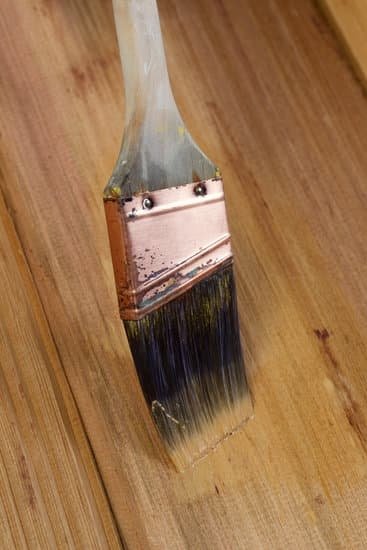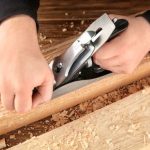Introduction
When choosing a router for fine woodworking, it is important to consider several factors. First of all, what is the nature of your work? If you are working on projects that require detailed cuts and precise shaping, then you will want to look for a router with an adjustable depth control feature and an appropriate selection of bits. The motor’s power output is another critical factor; powerful motors minimize vibration and provide more control over the cut. You should also consider how easy the router is to use; some models offer variable speed controls, soft-start capabilities, and dust extraction systems. Additionally, you should pay attention to the build quality of the router; it should have a sturdy base and durable metal components. Finally, take into account any additional features that may be desirable, such as LED lights or comfortable handles. By considering these various features in detail before making a purchase decision, you can ensure that you get the best router for fine woodworking.
Assessing Your Woodworking Needs
When it comes to selecting the best router for fine woodworking projects, the first step is assessing your particular needs. Many types of routers can be used for a wide range of woodworking applications, but they all have their own set of specialized features and capabilities. Features like speed control, depth adjustment, integrated dust collection systems, and special types of bit shapes and sizes can make a big difference in how well the router will function for your specific project type.
For example, if you’re working on intricate joinery like dovetails or box joints, you’ll want a router with adjustable depth control and variable speed settings so that you don’t accidentally burn out your workpiece. Plunge routers are especially useful when working at different depths in different areas due to their adjustable speed settings. On the other hand, if you’re doing more basic tasks like making straight cuts or cutting plywood sheets for a project, then opting for a fixed-base model could be sufficient. Fixed-base models are great because they tend to be less expensive than plunge routers and offer solid, reliable performance even at high speeds. For high-production jobs like flattening corners or beefing up mortise and tenon joints on cabinets and furniture, a powerful above-table style router may be best. These models typically come with long guide fences that let you make repeatable cuts quickly; some even feature integrated vacuums for easy clean up afterward. No matter your specific preferences and needs, there’s likely to be a router out there that will meet them perfectly!
Feature Spotlight
When it comes to fine woodworking, you need a router that can provide both power and precision. Having a good quality router that is easy to use will make the job of cutting, shaping and edging much easier. The best routers for fine woodworking should provide the right tools you need for the job, including accuracy, versatility and the power you need for large projects.
In terms of power, there are two main types of motor: corded-electric and air-powered. Corded electric routers offer more torque and therefore more power as compared to their air-powered counterparts. When evaluating a router for fine woodworking, consider how powerful it needs to be for the project you plan to work on. If you are looking for a tool with moderate power (up to 3HP), then an air-powered model may suit your needs perfectly; however if you require high levels of torque and power (maybe up to 4HP) then a powerful corded model may be your best option.
It’s also important to consider precision when selecting a router suitable for fine woodworking tasks. Look out for features such as depth stops which allow users to set exact depths when making cuts in larger pieces of timber. Spindle locks are also incredibly useful as they make it simple and efficient to change bits mid-project without compromising accuracy or stability. Additionally, dust collection capabilities help reduce mess by collecting dust right at the source which helps increase safety while preserving visibility on workpieces.
Finally, versatility should therefore be kept in mind when shopping around for the best router suitable for fine woodworking projects. Multi-base compatibility enables users to move from one type of base plate (such as plunge) onto another (for example fixed) with ease ” this makes switching between applications quick and simple; ideal for completing multiple jobs quickly! A range of accessories can also increase your hobbyist’s capabilities even further ” look out for jigs or templates which enable intricate designs to be created efficiently every time!
Power Levels
When it comes to woodworking, having the right router is essential. Not only does a good router provide an even finish and accuracy in cutting, but it also needs to have the power necessary for precise results. That’s why one of the most important features of a router is its ability to adjust speed settings.
Variable speed settings are beneficial for different reasons; with three main advantages being: improved control and precision, reduced material wastage and protecting your tools from becoming overheated during extended use. By enabling you to adjust the speed according to your requirements, variable speed routers ensure that small details can be crafted accurately, without damaging the materials or making inaccurate cuts due to lack of control over the speed of your router. There will also be fewer chips, chips and waste wood when accurately controlling your speeds as opposed to using constant high-speed acceleration; which allows you minimize material wastage. Lastly, variable speed helps protect your tools from heat damage by allowing you stop them off abundantly while they’re in use. This way they don’t reach temperatures that are too high and damages their motors or other internal workings while they’re grinding away at tough pieces of woodwork project.
Overall, variable speed setting is an essential feature that must come into consideration when searching for best routers for fine woodworkings. As such routers give users greater control over the cutting process without damaging their tools or wasting material in the process ” ultimately offering best benefits for satisfyingly perfect outcome every time!
Accessories
When it comes to fine woodworking, a router bit or attachment can make life significantly easier. Router bits are versatile tools with various sizes and shapes that are designed to fit into a router device and help create cuts in wood, plastic and aluminum. They generally have four components: the shaft, the blade holder, the cutting edge, and the bearing. The most commonly used router bits for woodworking include straight tapered edge bits for creating grooves, round over bits for creating rounded edges on furniture and trim, flush trim bits for cutting patterns in identical pieces of furniture; dovetail jigs for making dovetail joints; v-groove bits for engraving decorative edges or lettering; and slot cutter sets for cutting slots quickly.
Attachments provide added convenience when routing by allowing different types of operations in one motion. These attachments include dust collection devices to connect with a shop vacuum or dust collector; templates for use in creating customized shapes; specialty guides like circle jigs which allow users to make beautiful circles quickly and without much fuss; feathered edge guides which allow users to route curves with smooth transitions between edges; lift platforms that raise and lower the router base as it moves along a project surface; adjustable speed control devices that can alter the speed of any router motor while it is running; soft start systems that offer gentle acceleration and deceleration process when starting the machine up or slowing it down; variable plunge adapters wherein users can adjust depths based on materials being cut through; collet extensions designed to reduce vibration during operation. Router tables also make projects much easier by allowing greater accuracy while controlling round-overs with fence stops.
Budget
When it comes to finding the best router for fine woodworking, the most important factor to consider is budget. Routers can vary in price dramatically depending on features and quality, so finding one that fits your needs within your budget is key.
For basic routing needs, a lower-cost model may be enough to get the job done. These routers may not have all the bells and whistles of higher-end models, but they will still provide solid performance without breaking the bank. Additionally, they tend to be lighter and more versatile than pricier models, making them easier to maneuver over larger pieces of wood.
For those who are willing to invest a bit more into their router purchase, more advanced models may be worth considering. These routers typically offer more power as well as precision adjustments that can help ensure accurate cuts every time. Some even come with extra attachments like plunge bases and edge guides for added versatility and convenience. They tend to cost significantly more than lower-end models but may prove worthwhile for serious woodworkers looking for maximum performance from their tools.
Top Picks
1. Bosch 1617EVSPK: This is an affordable, variable-speed router that includes a plunge base and fixed base with micro-fine depth adjustment. It has adjustable soft start, which can prevent kickbacks when starting up your routing project. The speed range ensures top performance in any kind of softwood or hardwood. It is designed to be powerful and precision controlled, making it perfect for both beginner and experienced woodworkers alike.
2. Triton TRA001: This is a high-performance professional router with dual routing and plunge capabilities. It offers variable speed up to 37000 RPM, providing you greater control over the cut profile for different materials. Its unique design includes an ergonomic switch for easy triggering of the depth setting and its auto-release plunge mode option helps guide each cut for optimum results. Its powerful motor provides ample torque for all woodworking tasks.
3. DeWalt DW618PK: A mid-range fixed/plunge base router ideal for all types of fine woodworking projects. Its 1¾ HP motor provides plenty of power with more than enough torque to handle tough woods and dense materials without bogging down your cut. With electronic feedback adjustments you can set consistent bit speeds while the soft start feature prevents kickback during start-ups in harder woods like oak or walnut. Its dust collection system keeps your workspace clean while the adjustable steel body adds stability to the machine itself when cutting into thick material like boards or panels.
Conclusion
After carefully considering all the factors discussed above for the best router for fine woodworking, it can be concluded that finding the optimal tool for the job boils down to understanding each router’s power and compatibility with different attachments. Throat depth, hp rating, router speed, and weight are all important considerations when selecting a reliable and versatile router. Furthermore, features such as how easy it is to adjust depth settings and whether or not the shafts are sealed measure up an effective choice of machine. Finally, just as crucial is a proper understanding of safety measures like electronic brakes included on many models to prevent injury mid-task. Thusly equipped with comprehensive knowledge about router characteristics, woodworkers can confidently select their ideal tool for maximum efficiency regarding fine woodworking.

Hi everyone! I’m a woodworker and blogger, and this is my woodworking blog. In my blog, I share tips and tricks for woodworkers of all skill levels, as well as project ideas that you can try yourself.





